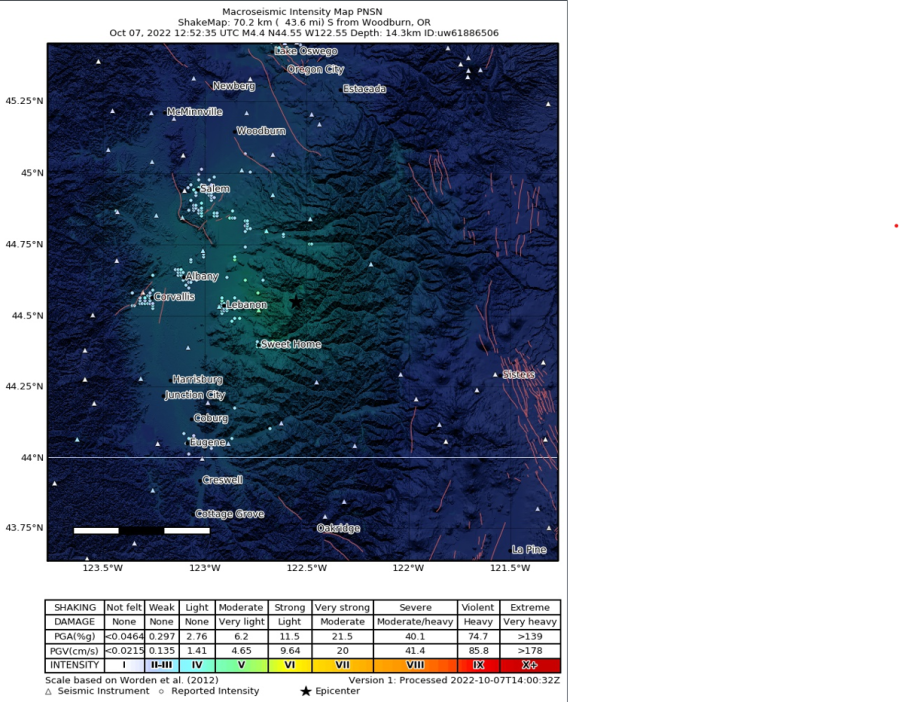PORTLAND, Ore. (KOIN) — The 4.4-magnitude earthquake that struck near the small town of Lacomb in Linn County on Friday morning was the largest earthquake to occur within the Willamette Valley since the “Spring Break Quake” of 1993.
The 1993 quake, also known as the Scotts Mills earthquake, occurred on March 25 at 5:34 a.m. The quake was felt around the Pacific Northwest and was one of the largest earthquakes to ever be recorded in the Willamette Valley region.
USGS data shows that Friday’s moderately-sized earthquake was detected as far north as Longview, Washington, and as far south as Roseburg. Portland State University Professor Emeritus of Engineering Geology Scott Burns told KOIN 6 News that an earthquake of this magnitude is rare for the Willamette Valley, occurring roughly about once every 20 years.
“A 4.4 magnitude quake is significant and can be felt for quite a long distance away,” Burns said. “I am in Salem right now and locals here felt it this morning.”

According to USGS historical records, Friday’s quake was one of six earthquakes of 4.4 magnitudes or larger to occur within the Willamette Valley since the late 1800s. The Willamette Valley’s earliest-recorded quake of this magnitude was a 5.0 recorded near McMinnville on April 2, 1896.
However, Oregon State University seismology expert Andrew Meigs told KOIN 6 that quakes of smaller magnitudes are much more common in the region. The state’s ability to detect these earthquakes has also vastly improved within the last 50 years.
“The regional coverage of seismometers has grown from five in 1969 to more than 300 today,” Meigs said. “Station density and coverage are necessary prerequisites to detection and location of earthquakes, especially small ones.”
Today’s earthquake was a shallow “crustal earthquake,” which occurred along a fault line 8.8 miles beneath the earth’s surface. The quake lasted for approximately five to 10 seconds, experts say, and was not directly related to a Cascadia subduction zone event or caused by volcanic activity in the region.
While the quake definitively occurred along a fault line, Burns said that the amount of time that’s passed since the fault’s last earthquake is unknown. That’s because scientists have only begun to understand Oregon’s seismic capabilities within the last 50 years.
“We do not know the last time this fault moved,” he said. “In Oregon, we [historically] never thought of us being an earthquake-prone state. We have so much work to do to map all [of Oregon’s] faults, and I am sure this fault is not mapped yet.”
